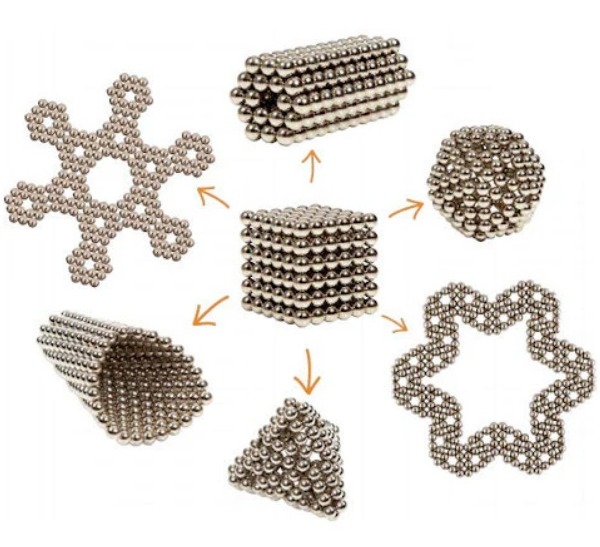 Hefei Super Electronics Co., Ltd.
Hefei Super Electronics Co., Ltd.
What Are You Looking For?
Buckyballs—those tiny, shiny magnetic balls—may look simple at first glance, but they are a perfect example of how magnetic principles work on a small scale. Each ball is a powerful sphere neodymium magnet, and when hundreds of them come together, they form surprisingly stable and complex structures. But what exactly makes them stick together so well?

Every buckyball has a north and south pole, just like a typical bar magnet. However, because of their spherical shape and small size, these poles are distributed in a way that allows for flexible and dynamic connections. When two balls come close, their opposite poles attract—north to south—and snap into place. This happens instantly and can occur in many directions, enabling smooth, multi-angle connectivity.

When multiple sliver magnetic balls are aligned, they tend to form chains first, as this is the most energetically favorable configuration. From chains, they can then be bent or twisted into loops, hexagons, or even spherical shells. The magnetic fields naturally seek a state of balance, pulling the balls into symmetrical shapes. This explains why it's so easy to build pyramids, cubes, and other geometric forms with them.

The reason these tiny balls can hold together so tightly is because they are made of neodymium—one of the strongest magnetic materials in the world. Despite their small size, each ball has enough magnetic pull to hold several times its own weight. That’s also why they snap together so quickly, and why separating them often takes a firm grip.
One of the most interesting principles at play is magnetic tension. As you build with buckyballs, you're balancing forces between multiple poles. Too much tension, and the structure collapses; just the right amount, and you get stable, beautiful constructions. This hands-on experience gives users a real feel for how magnetic fields behave.
Buckyballs are more than just fun desk magnetic toys—they’re a hands-on lesson in magnetic theory, symmetry, and geometry. Their ability to form endless shapes comes directly from the invisible forces at work inside each tiny sphere.
Hi! Click one of our members below to chat on